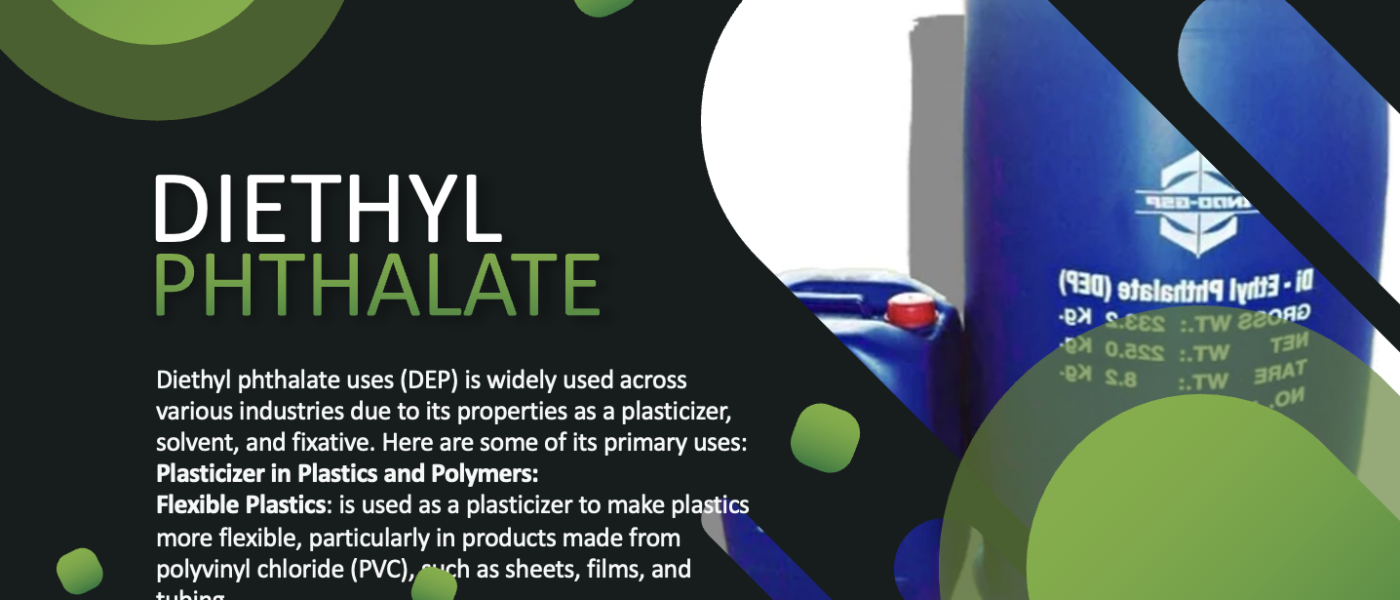Diethyl Phthalate Structure
Diethyl phthalate (DEP) is an organic compound belonging to the phtalate family, commonly used as a plasticizer. Understanding its molecular structure is essential for comprehending its chemical properties and applications.
Chemical Structure :
1. Molecular Formula:
- C₁₂H₁₄O₄
2. Structural Description:
DEP consists of a benzene ring (a six-carbon aromatic ring) with two ester functional groups attached to it. These ester groups are located at the 1 and 2 positions (also known as the ortho positions) on the benzene ring. Each ester group is formed by the reaction of phthalic acid with ethanol.
- Benzene Ring: Provides the aromatic backbone of the molecule.
- Ester Groups (-COOCH₂CH₃): Attached to the benzene ring, these groups are responsible for the plasticizing properties of DEP.
3. Structural Formula:
Here is a simplified representation of diethyl phthalate’s structure:
mathematica
O
||
C6H4 - C - O - CH2CH3
||
O
||
C6H4 - C - O - CH2CH3
Alternatively, using SMILES (Simplified Molecular Input Line Entry System) notation, which is a way to represent a chemical structure using a line of text:
- SMILES:
O=C(OCC)C1=CC=C(C=C1)C(=O)OCC
4. IUPAC Name:
- Diethyl benzene-1,2-dicarboxylate
Visual Representation:
While I cannot provide images directly, here’s a textual description to help visualize the structure:
- Aromatic Ring: Start with a benzene ring (a hexagon with alternating double bonds).
- Ester Linkages: At the 1st and 2nd carbon atoms of the benzene ring, there are ester groups attached. Each ester group consists of a carbonyl group (C=O) linked to an ethoxy group (–OCH₂CH₃).
Key Functional Groups:
- Aromatic Ring (Benzene): Provides stability and rigidity to the molecule.
- Ester Groups: Contribute to the flexibility and plasticizing properties, allowing DEP to be effective in making plastics more pliable.
3D Structure Insights:
In three dimensions, diethyl phthalate has a planar aromatic ring with the ester groups extending outward. The molecule’s geometry allows for effective interaction with polymer chains, facilitating the plasticizing effect.
Properties Influenced by Structure:
- Flexibility: The ester linkages provide DEP with the ability to increase the flexibility of polymers like PVC.
- Solubility: The ethyl groups in the ester linkages enhance DEP’s solubility in organic solvents.
- Thermal Stability: The aromatic ring contributes to the thermal stability of DEP, making it suitable for various industrial applications.
Applications Tied to Structure:
- Plasticizer: The ester groups interact with polymer chains, reducing intermolecular forces and increasing flexibility.
- Solvent: The molecular structure allows DEP to dissolve various substances, making it useful in cosmetics and pharmaceuticals.
Safety and Handling:
Understanding the structure is also crucial for handling DEP safely, as the ester groups can undergo hydrolysis under acidic or basic conditions, potentially releasing ethanol and phthalic acid.
